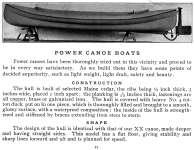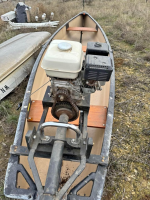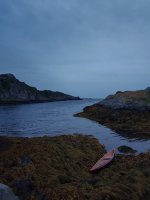I had a similar experience in an Osprey. We had been cutting portages all day, and everyone in the crew was very tired, so prone to making bad choices. We were on the north shore of Ara Lake, and needed to get to the south shore, a distance of about 2 miles. The wind was blowing from the north, so we were in the lee. I paddled about a half mile to check things out, and the waves looked fine. I guess it's hard to see waves a mile away.
We started across in three canoes, and by the time we hit the middle of the lake, the waves were so big that when a canoe beside me went into the trough, I could no longer see it. I speculate they were rolling around 5 feet high. Fortunately, they were quite far apart, so it was a matter of surfing crests and racing down the side, then repeating the procedure over and over. I knew that if any of the canoes went over, there was no way to rescue them, would have been impossible even for a motor boat.
I didn't take long to get across, under a half an hour, but I was pretty sure something bad was going to happen. We were thrown upon the beach when we landed, and I literally kissed the ground.
So I'm sure we have all made dodgy decisions, but at least we didn't post them on social media and tried to solicit funds so that we could create the next Darwin Award entry.




